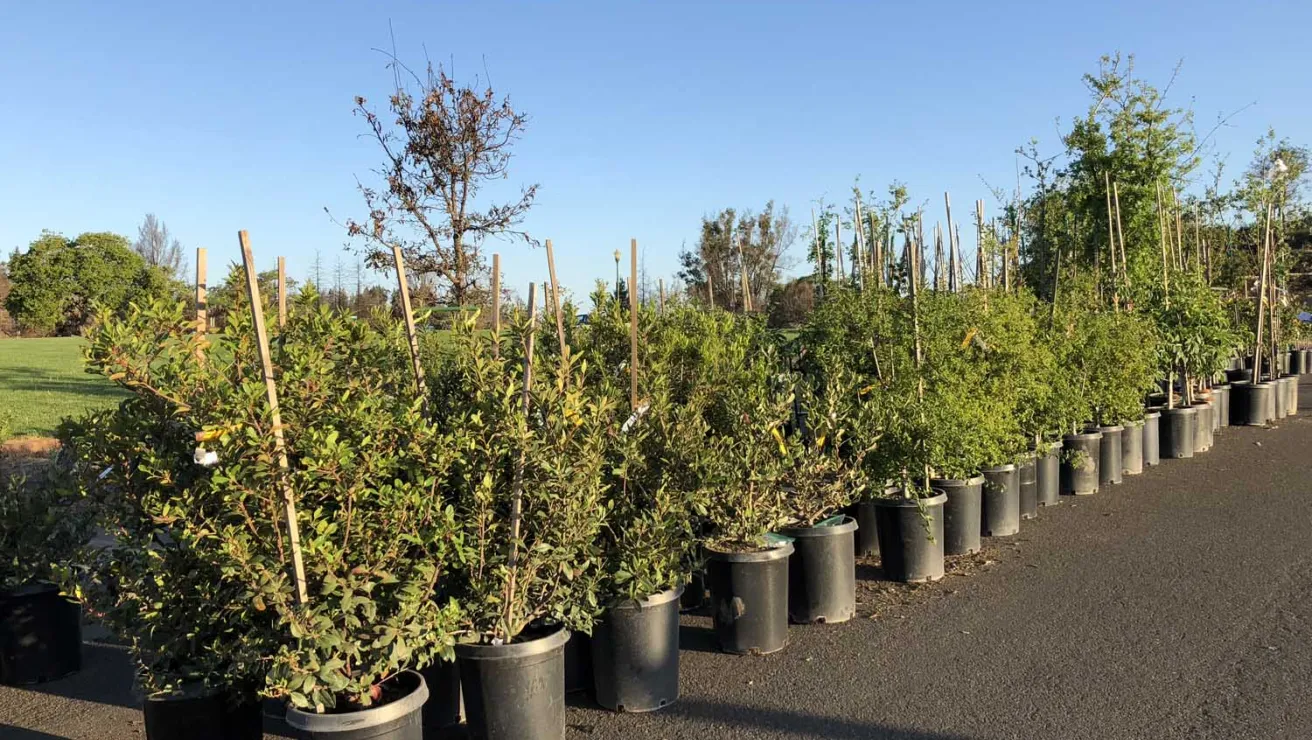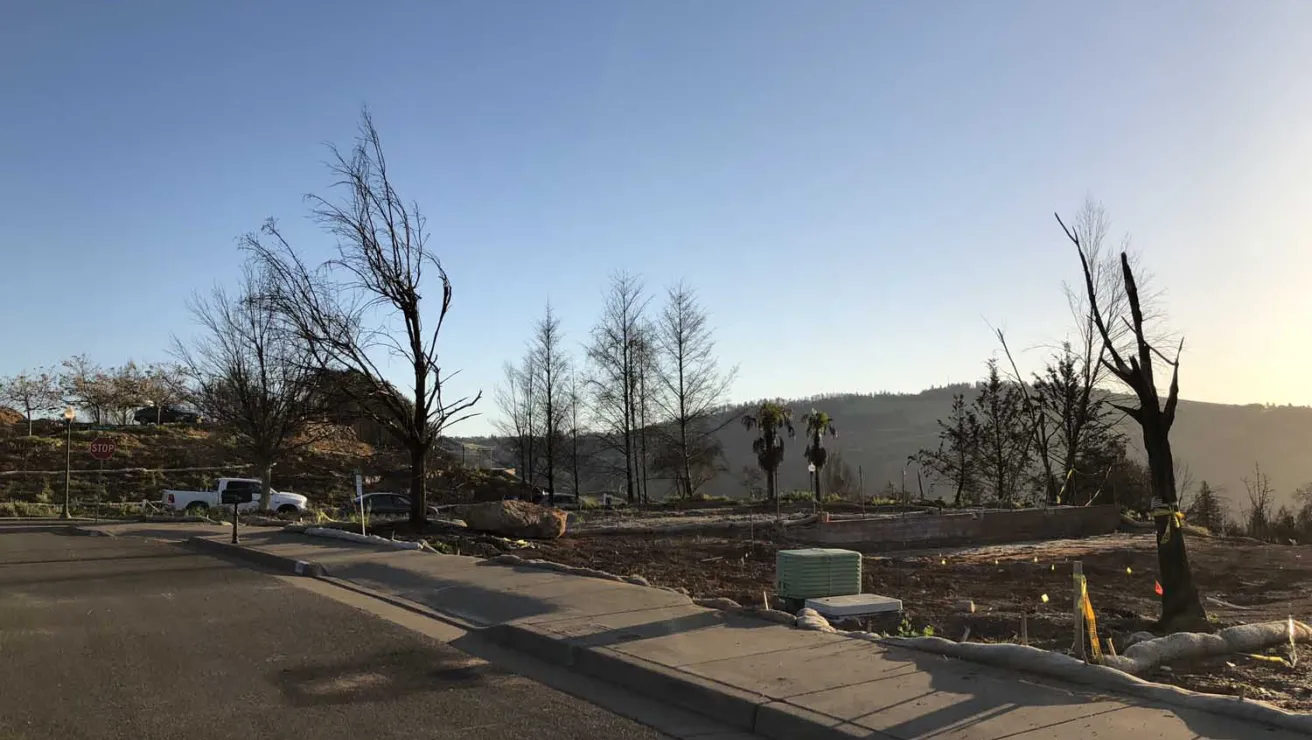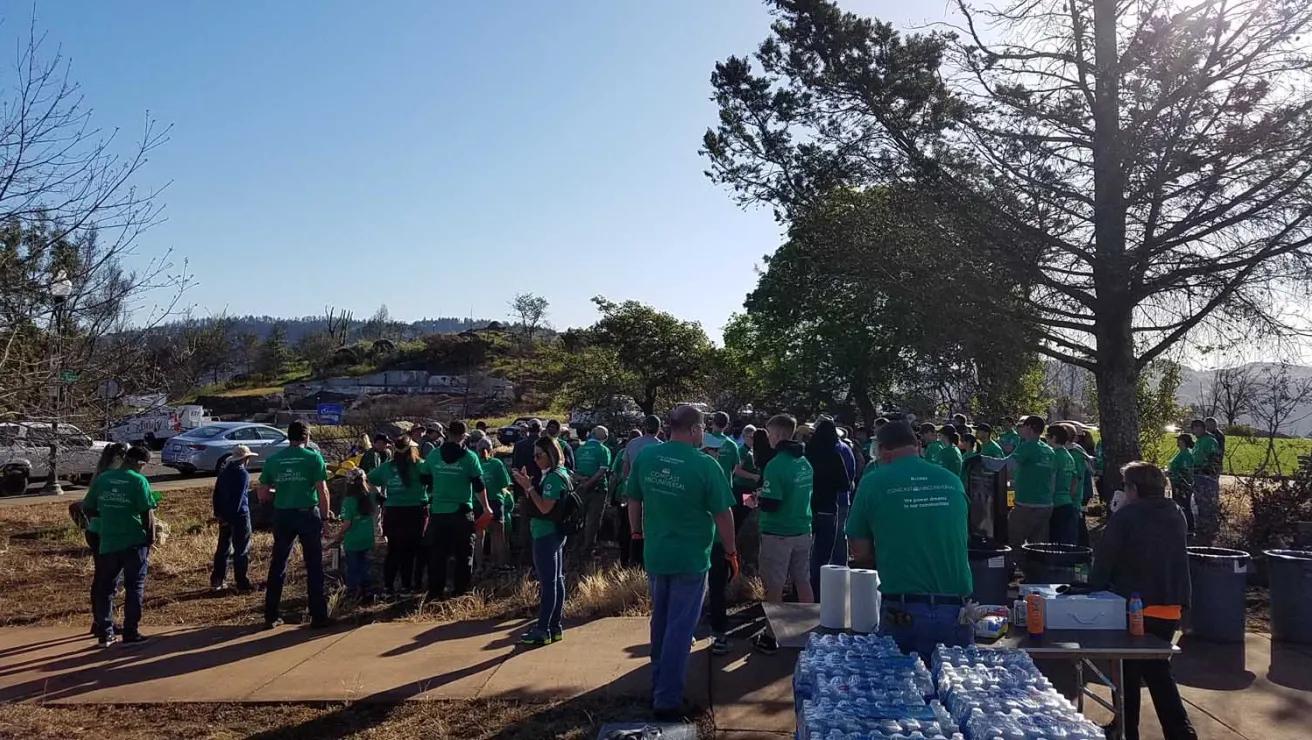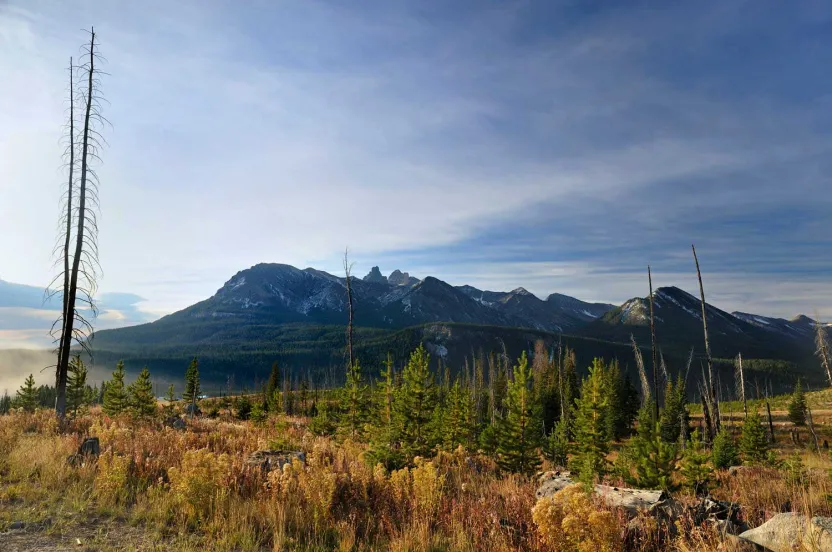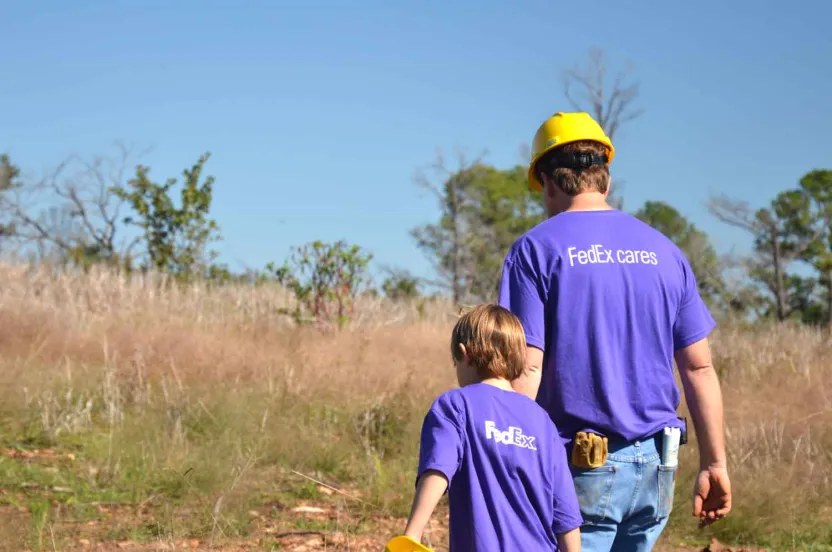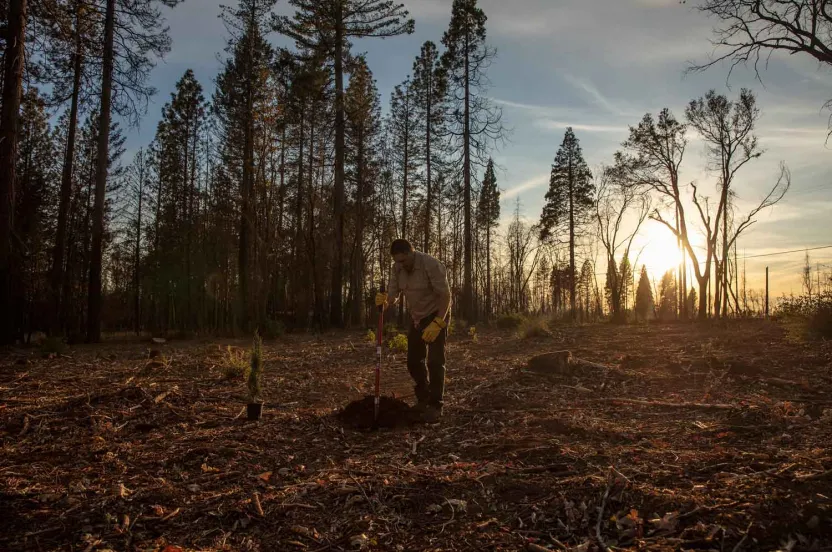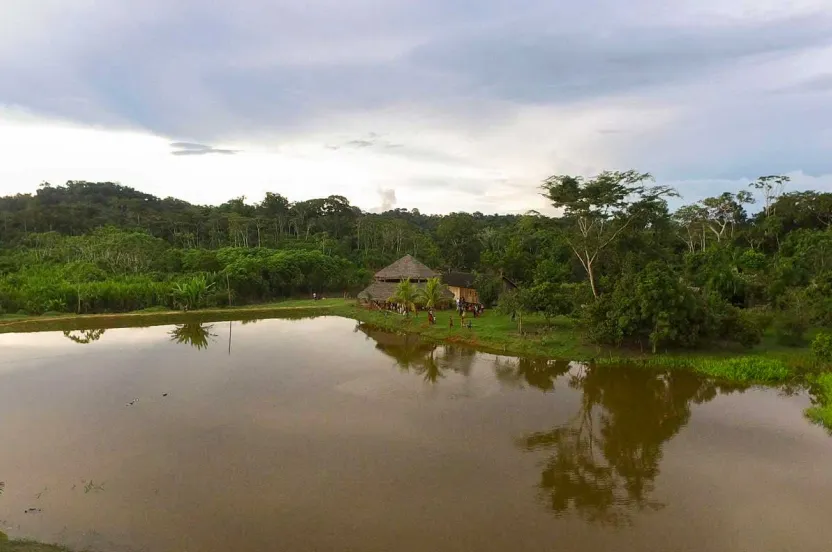The Arbor Day Foundation is pledging 10 million trees to areas impacted by hurricanes Helene, Milton Help us replant
California Wildfire Restoration—Rebuilding Santa Rosa Neighborhoods
After the destructive 2017 Tubbs Fire in Santa Rosa, California, efforts began to restore neighborhoods with native oak plantings and to improve urban forest resilience, focusing on fire prevention through reforestation, tree management, and habitat preservation.
June 5, 2020
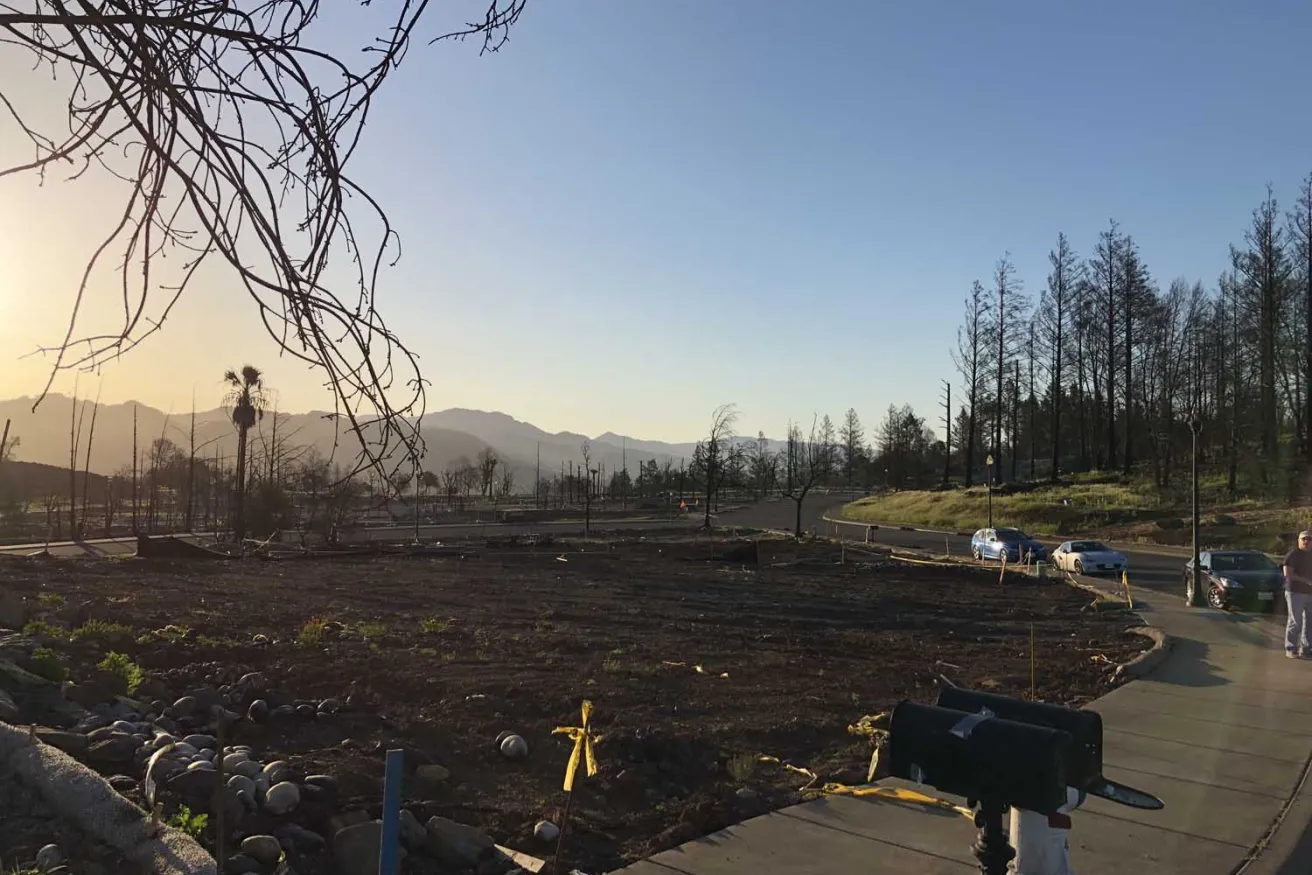
In 2017, the Tubbs Fire was the most devastating in California state history, raging through the city of Santa Rosa, with more than one thousand homes reduced to rubble.
In 2017, the Tubbs Fire was the most devastating in California state history, raging through the city of Santa Rosa, with more than one thousand homes reduced to rubble. All that was left of neighborhoods lost to the Tubbs Fire were blackened soil, driveways, and sidewalks. To bring hope as the community rebuilds, planting efforts and tree distributions are helping to restore the beauty and utility of Santa Rosa’s neighborhood trees.
"The quieted streets of Santa Rosa’s Fountaingrove neighborhoods are still lined with charred trees, standing and toppled, that await removal. They were torched in the Tubbs Fire that raged through here, burning more than 1,400 houses. A few homes are beginning to rise from the ashes. But on April 21—the start of Earth Day weekend—to signal the revival of this fire-blackened neighborhood, more than 100 volunteers gathered to plant native oak trees and other species." - Press Democrat staff writer, Nick Rahaim
On the Earth Day weekend of 2018, a collective urban reforestation effort in Santa Rosa neighborhoods was undertaken, with Comcast and the Arbor Day Foundation providing trees and planting materials, and the California Urban Forests Council and the Fountaingrove II neighborhood association taking care of planning and logistics. Volunteers planted hundreds of new trees in the fire-ravaged Fountaingrove neighborhood.
More recently, efforts were made to manage future urban forests and reduce the chances of such a tragedy occurring again. Instead of Douglasfir and bay trees, which had been allowed to grow too close together and were extremely susceptible to the blaze, oaks have been chosen as a practical alternative still native to the habitat. A two-year project began at the end of 2019 to improve the forest’s health by removing standing fuel in high-risk fire areas, culling smaller trees and shrubs, while giving saplings more space to grow. Preserving and renewing the Mark West Creek is also a high priority of the project, in part to protect gravel nests, called redds, where female salmon and steelhead lay their eggs.

